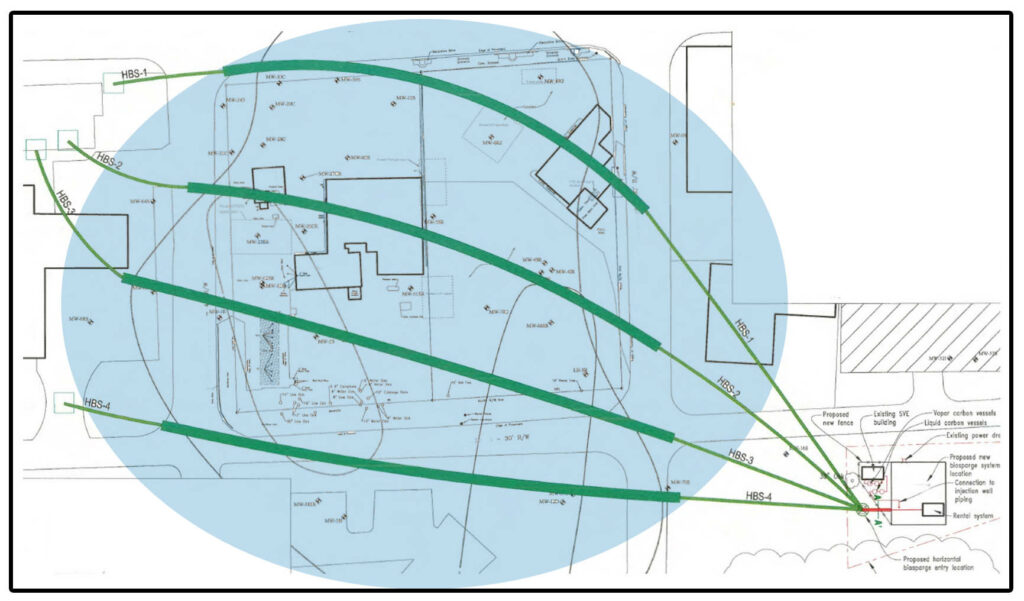After 30 years of not reaching cleanup standards using vertical wells, horizontal wells with biosparge technology were chosen by a frustrated client. Where vertical wells were limited, horizontal wells were chosen because they are better able to target the source of the problem. The horizontal wells were engineered to function as Horizontal Biosparge Wells in combination with an existing Soil Vapor Extraction system.
Free product was first discovered in the early 1980s. Several remedial approaches were employed including:
- Excavating test pits to remove free product,
- To recovery trenches,
- To a full-scale product recovery system with 51 vertical wells,
- To targeted vacuum truck events, and
- To an internal combustion engine (ICE).
These remedial approaches reduced free product thickness. Yet, petroleum impacts still existed.
Site lithology consisted of sands and clayey sands. Groundwater fluctuated between ≈10 to 20 feet bgs. The shallow zone was separated from an intermediate zone by a silty clay unit at ≈30 feet bgs.
Nearly 30 years after the release was discovered, source removal was then completed via remedial excavations. Over 31,000 tons of petroleum impacted soil was excavated to 22 feet bgs. However, soil and groundwater impacts remained above cleanup standards. Pockets of source areas remained due to physical site constraints. Over 4,000 tons of soil was estimated remaining in the vadose and smear zones after remedial excavation activities. Hence, site closure could still not be achieved.
To cleanup remaining impacts, four (4) horizontal wells engineered with biosparge technology were installed to a depth of 28 feet bgs. Horizontal Biosparge Wells have screen engineered with longitudinal slots to achieve uniform distribution across its entire length. Over 1,300 feet of horizontal well screen was installed and strategically located to capture remaining impacts.
